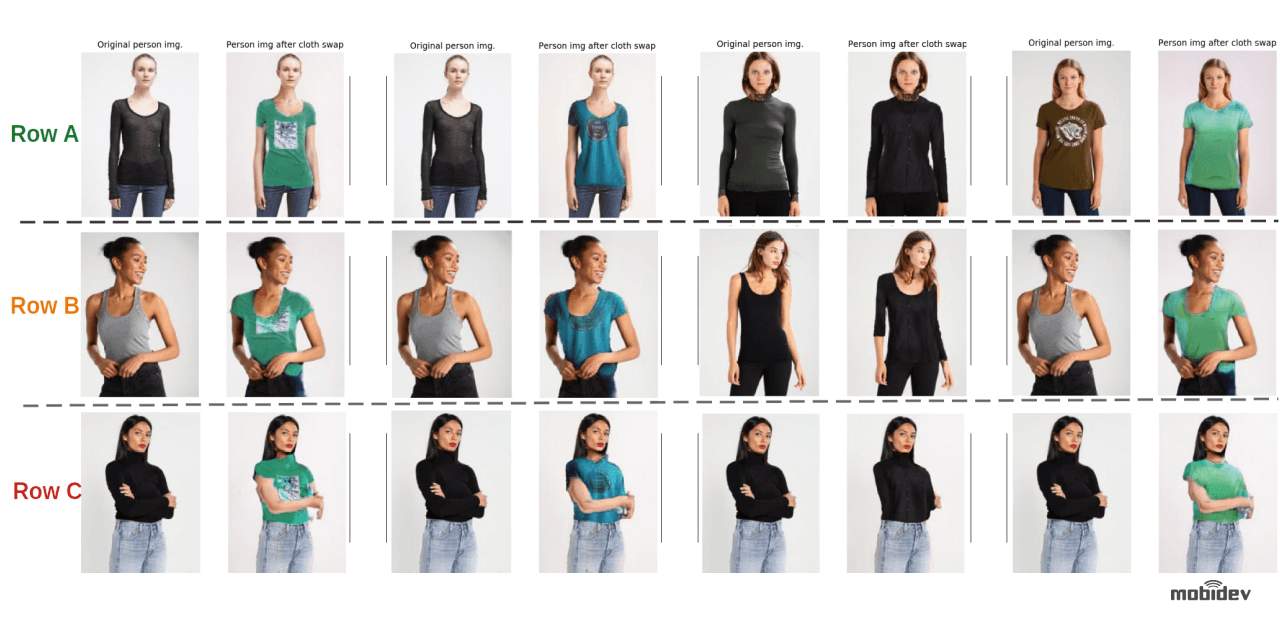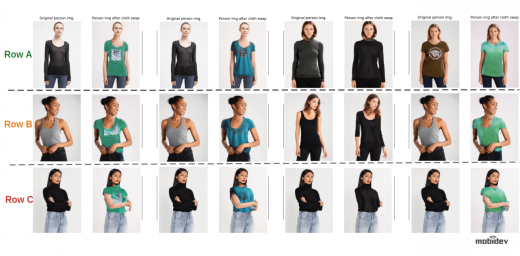Virtual Dressing Room to Increase Sales During COVID-19
Virtual Dressing Room to Increase Sales During COVID-19

COVID-19 has changed the way people worldwide behave daily, and nowhere is this felt more keenly than in bricks-and-mortar retail. For decades, retailers have been trying various customer engagement strategies to bring people in and let them browse samples and linger to their heart’s content. But the pandemic has made nearly all those experiences risky and undesirable. Personal safety wins out of the desire to try on clothing, jewelry, makeup, and other wearable products.
Increasingly, with COVID-19, retail businesses are turning to virtual dressing rooms as an alternative for their customers.
A virtual dressing room allows a user to upload a video of themselves and then renders an Augmented Reality image of the person modeling their perspective items.
Certain sectors of the retail industry have already been embracing Augmented Reality dressing rooms, most notably the cosmetics and jewelry industries. But many more retail sectors are adopting virtual dressing rooms, and the pandemic has accelerated the process greatly.
Artificial Intelligence in Virtual Dressing Rooms
Like many digital business applications, virtual dressing rooms are driven by recent advances in technology, from AR and VR to Artificial Intelligence. In fact, technology is advancing so quickly that one of the barriers to adoption is simply that many people don’t realize how good virtual dressing rooms can be if they’ve never tried one before.
But more and more consumers are trying them and generally like their experiences. As a result, the virtual dressing room market looks to have staying power even after COVID-19 becomes less of a clear-and-present threat. By 2027, the virtual dressing market is projected to be a $ 10 billion industry.
Virtual Dressing Rooms Becoming Mainstream
For several years, certain retailers have toyed with virtual dressing room solutions and related apps, although frequently, these have been limited in scope and with mixed results. However, the combination of technology-driven increases in quality and the pandemic driving customers away from physical store locations has led to a significant uptick in virtual dressing room adoption.
Global retail giants like Macy’s and Adidas have led the way in virtual dressing room implementation, with many smaller retailers following suit.
Amazon is also involved in virtual dressing room development, as its online retail model continues to gobble up market share.
For many retailers, embracing virtual dressing rooms is a necessity right now. They’ve blocked off their physical dressing rooms and forbade customers to handle merchandise like they once did out of fears that these behaviors will spread COVID-19. And many customers simply aren’t coming out to stores regardless.
In today’s retail landscape, the virtual dressing room represents an opportunity to recapture some of the lost business that’s crushing most retailers’ profit margins.
How Virtual Dressing Rooms Work
From a technical standpoint, the two broad technologies pivotal to the virtual dressing room are Augmented Reality and Artificial Intelligence. These are huge domains that stretch far beyond the scope of a virtual dressing room solution, and it’s useful to understand just how these technologies apply here.
The virtual dressing room process begins with video capture of the person who will be trying on the virtual item. Often, the recording device is a mobile smartphone. A smartphone is an ideal vehicle because it contains both the camera to capture video and a screen to display the AR image of the person/body part with the wearable item modeled.
The video is parsed by human pose estimation algorithms that identify a range of key points or locators on the human body, which allow the application to understand the contours, size, and spatial location of the person. Often, AI deep learning routines are used to make these determinations. The accuracy of these AI-driven processes can be far superior to a human programmed process, allowing for far greater fidelity in virtual dressing room development.
Once the body’s dimension and location are fixed, the application then appends the item of clothing or accessory to the image on the screen, allowing the user to model that item virtually in a 3-D, photorealistic display.

Pros and Cons of Virtual Dressing Rooms
Like any business or technological innovation, virtual dressing rooms have their advantages and disadvantages when compared to the traditional model.
It’s important to grasp that virtual dressing room technology continues to develop and evolve, and as the process continues the industry will change. Former drawbacks may be mitigated, and advantages may heighten as supporting technology improves.
But even as some problems may fade in relevance, others may develop. The following pros and cons represent a snapshot of the short — and medium-term projections for the virtual dressing room landscape.
Benefits of Virtual Dressing Rooms
The most obvious benefit to a virtual dressing room is giving the customer the ability to sample and model products remotely. But for this to be worthwhile, the AR rendering has to be realistic enough to be useful. If a user doesn’t feel comfortable with the image they’re seeing, a virtual dressing room is a failure.
Fortunately, the science of capturing the human body and rendering it in a virtual environment is one that engineers and developers are devoting massive amounts of time and resources to. While virtual dressing rooms aren’t the most important or lucrative application of these processes, we reap the rewards of that development and innovation.
The real game-changer is the implementation of artificial intelligence in the video capture and rendering process. Deep learning algorithms can estimate and display the user’s full body, face, head, hands, feet, or any other specific body area with rapidly increasing clarity and accuracy.
This is taking us toward the point where the average shopper regards a virtual dressing room as roughly equivalent in quality to the physical experience. Once we’ve achieved that benchmark, the traditional dressing room is nearly entirely obsolete.
Potential Drawbacks to Virtual Dressing Rooms
Many of the current drawbacks to virtual dressing rooms are temporary issues likely to be addressed in the coming years.
People are excellent judges of the human form, especially their own. If a virtual dressing room image has minor imperfections, this can detract from the immersive experience and leave a customer uncertain about whether they can trust what they’ve seen.
In some cases, virtual dressing room solutions are close but to quite up to the highest standard, meaning that customers would prefer traditional ones if given a choice.
During this pandemic, virtual dressing rooms receive a bump simply by being the only realistic option for people looking to minimize their COVID-19 risk. However, at some point in the next year or so, countries will begin to get the pandemic under control via the release of vaccines.
At this point, the question is whether virtual dressing rooms will offer a seamless and accurate experience, one good enough to keep people using them when life can return more to normal. This is where the industry will be continuing to focus.
One final potential drawback worth mentioning is that virtual dressing rooms can pose a data security issue. The process captures users’ face and body data and background images from wherever the user is filming.
It would be possible for a developer to engineer a virtual dressing room solution that pulls biometrical data and geolocation data from its users. That data could then be used to create profiles of those users, allowing third parties to use this info in a variety of ways.
This particular concern is a universal one in our increasingly digital world, far from unique to virtual dressing rooms. But the video data captured here is particularly intimate, and users may have special concerns.
In 2020, the advent of COVID-19 has reshaped the retail landscape in a seismic way. Consumers avoid stores and businesses find the physical process of trying on and sampling wearable items riskier. In this environment, virtual dressing rooms are being adopted more and more.
But the virtual dressing room concept is more than just a quick-fix workaround for the pandemic. Hand-in-hand with the rise of online retail, virtual dressing rooms have the potential to supplant the traditional dressing room. As AI technology matures, a larger group of consumers will likely find themselves using virtual dressing rooms even afterlife returns more to normal.
The post Virtual Dressing Room to Increase Sales During COVID-19 appeared first on ReadWrite.
(24)


